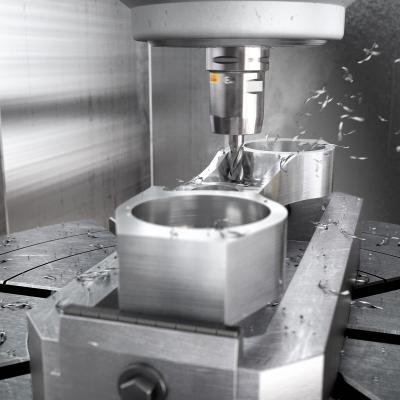
Cutting tool specialist Sandvik Coromant is expanding its line of CoroMill® Dura versatile solid end mills with aluminum-specific tools.
“These new, truly versatile end mills for aluminum machining are developed to have excellent capabilities in all applications,” says Antti Wikström, Global Product Manager, Solid End Mills, at Sandvik Coromant. “Stable cutting, small burr, good surfaces and minimal vibration is a combination that’s hard to beat for a versatile end mill like this.”
“One of the main advantages of the new CoroMill Dura aluminum-specific end mills is their versatile performance in all different types of roughing applications, while also offering finishing capabilities,” Wikström continues. “Up to 2×D full slot, pocketing, 5–20° ramping, shoulder milling and more — all with the same end mill.”
Another advantage is Sandvik Coromant’s unique WhisperKut™ helix concept, in which each flute is carefully oriented, unequally spaced from the others and has its own individually adapted helix angle, effectively breaking up harmful harmonics. This design successfully eliminates vibrations, resulting in silent, safe and efficient machining.
The standard assortment offers diameters from 2–25 mm, depths of cut between 1.5–3×D, neck options, extended reach cutters, and sharp and corner radius styles. Tailor Made® options include coated grades for more abrasive aluminums, specific diameters, corner designs and shank options.
To make tool selection easier, the online CoroPlus® Tool Guide for CoroMill Dura assists with tool and cutting data recommendations. “Having the right cutting data is, of course, a prerequisite for both secure and efficient machining,” says Wikström. “With the CoroPlus Tool Guide for CoroMill Dura, we can give the most accurate starting values for a specific application. And, if you have CAM software with the CoroPlus Tool Guide plug-in, it makes it even easier — you get the most relevant cutting data recommendations directly into your CAM program.”
Contact Details
Related Glossary Terms
- abrasive
abrasive
Substance used for grinding, honing, lapping, superfinishing and polishing. Examples include garnet, emery, corundum, silicon carbide, cubic boron nitride and diamond in various grit sizes.
- burr
burr
Stringy portions of material formed on workpiece edges during machining. Often sharp. Can be removed with hand files, abrasive wheels or belts, wire wheels, abrasive-fiber brushes, waterjet equipment or other methods.
- computer-aided manufacturing ( CAM)
computer-aided manufacturing ( CAM)
Use of computers to control machining and manufacturing processes.
- gang cutting ( milling)
gang cutting ( milling)
Machining with several cutters mounted on a single arbor, generally for simultaneous cutting.
- helix angle
helix angle
Angle that the tool’s leading edge makes with the plane of its centerline.
- milling
milling
Machining operation in which metal or other material is removed by applying power to a rotating cutter. In vertical milling, the cutting tool is mounted vertically on the spindle. In horizontal milling, the cutting tool is mounted horizontally, either directly on the spindle or on an arbor. Horizontal milling is further broken down into conventional milling, where the cutter rotates opposite the direction of feed, or “up” into the workpiece; and climb milling, where the cutter rotates in the direction of feed, or “down” into the workpiece. Milling operations include plane or surface milling, endmilling, facemilling, angle milling, form milling and profiling.
- milling machine ( mill)
milling machine ( mill)
Runs endmills and arbor-mounted milling cutters. Features include a head with a spindle that drives the cutters; a column, knee and table that provide motion in the three Cartesian axes; and a base that supports the components and houses the cutting-fluid pump and reservoir. The work is mounted on the table and fed into the rotating cutter or endmill to accomplish the milling steps; vertical milling machines also feed endmills into the work by means of a spindle-mounted quill. Models range from small manual machines to big bed-type and duplex mills. All take one of three basic forms: vertical, horizontal or convertible horizontal/vertical. Vertical machines may be knee-type (the table is mounted on a knee that can be elevated) or bed-type (the table is securely supported and only moves horizontally). In general, horizontal machines are bigger and more powerful, while vertical machines are lighter but more versatile and easier to set up and operate.
- shank
shank
Main body of a tool; the portion of a drill or similar end-held tool that fits into a collet, chuck or similar mounting device.

